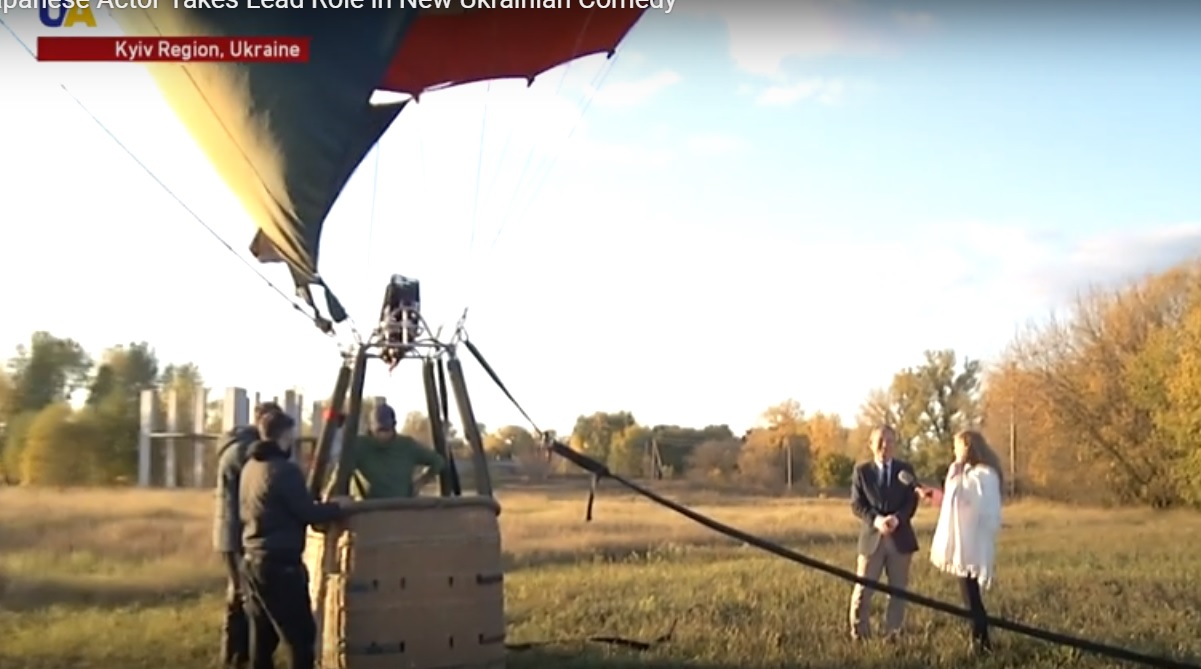In everyday life, his name is Kasai, but in this film, he’s called Hiroshi. In both reality and on screen, Kasai is a professor. In this film about Ukraine, he will play the lead role.
“We found a person, about whom the script was basically written. He really is a professor, he’s Japanese, and he doesn’t speak English, Russian, or Ukrainian very well. By the second day of filming, however, we started to understand each other easily,” says Dana Sebesevych, linear producer.
According to the script, Hiroshi travels to Kyiv for a scientific conference. When his train stops in Lviv, he gets out to drink a cup of the local coffee and misses his flight.
“He’s very adventurous. Even when he gets lost in Lviv, he doesn’t take the situation as a fiasco. To him, it’s just another chance to start off on a cool adventure,” tells Dmytro Nyshtvais, screenwriter and producer.
His travels lead him to the Carpathian mountains. Hiroshi only knows one word in Ukrainian — “diakuiu”, which means “thank you”. Before long Hiroshi finds himself in the middle of a Hutsul celebration, a people of the Ukrainian high lands.
“The location where we filmed was 1200 meter above sea level. To get up that high, we could only go by car. When we had 30 people going up, including our musicians, and their equipment the slope was 45 degrees, and the car was struggling. We were all praying to get there. Thank god it all turned out fine,” says Zen, director.
After the nightlong Carpathian party, Hiroshi unexpectedly wakes up in the basket of a hot air balloon.
Kasai the actor had only ever flown in a hot air balloon once in his life, in Australia:
“It’s so loud, and there’s such a big flame! I’m pleased! I’m not afraid. My name is Kasai, which in Japanese means ‘flame!'”
The filming crew also had the opportunity to take in the experience.
“I haven’t filmed on a balloon before. If I fall, just make sure I look good on camera,” says Kyrylo, cameraman.
The idea for the film was created by the Ministry of Information Policy of Ukraine, with an aim of reminding the world that Crimea is Ukraine. After Hiroshi woke up in the hot air balloon finds himself flying over the Black Sea Peninsula.
“We want to show Ukraine in a different light. Everyone thinks of war and instability when they think of us. We want to show a creative, human, and resourceful Ukraine. We want to show this because this war will end one day,” explains Maryna Sobotiuk, press officer for the Ministry of Information Policy of Ukraine.
Hiroshi leaves Crimea for Odesa by yacht. While it may look like the Black Sea, the filming actually took place in the Kyiv reservoir. All other shots throughout the film were done in their true locations. The movie’s creators have named the film’s genre a comedy in a documentary style.
“We often filmed amateur actors. For example, when we’re in the Carpathians at the Hutsul party, those were real Hutsuls. We just organized the event around the professor, but the people’s reactions were genuine. As were his,” says Dmytro Nyshtvais.
Kasai saw Lviv, the Carpathians, and Odesa for the first time, but he already has his favorite places in Kyiv. Among them are the Golden Gates, Independence Square, and Sofiivska Catedral. The actor hopes that this film will help his fellow countrymen fall in love with Ukraine:
“There are a lot of beautiful places in Ukraine which need to be seen. I think this film will help show them. This film will help people in Japan and other countries get to know more about Ukraine. The people here are very nice too.”
The film will be shown with subtitles in Ukrainian, English, and Japanese, and will appear on screens around the world before the end of the year.








